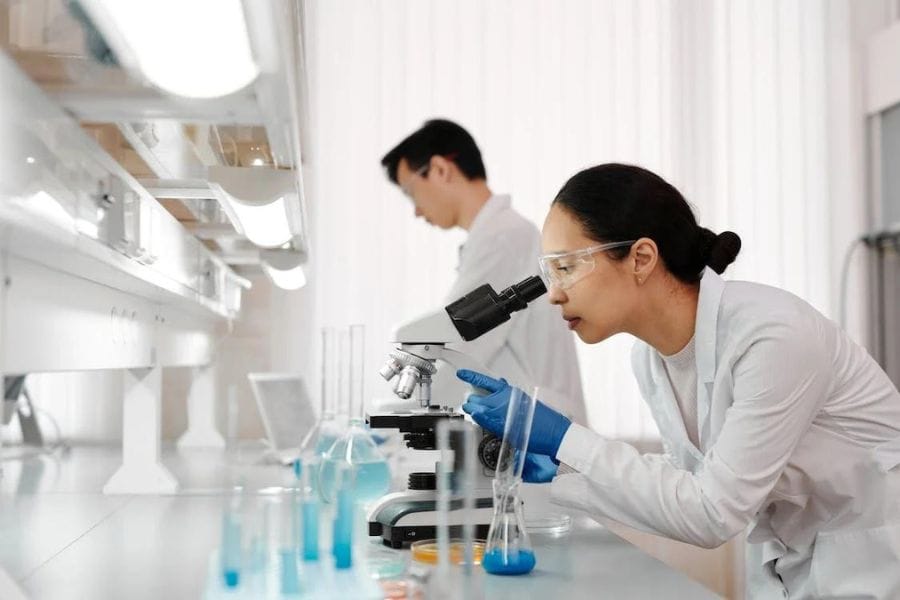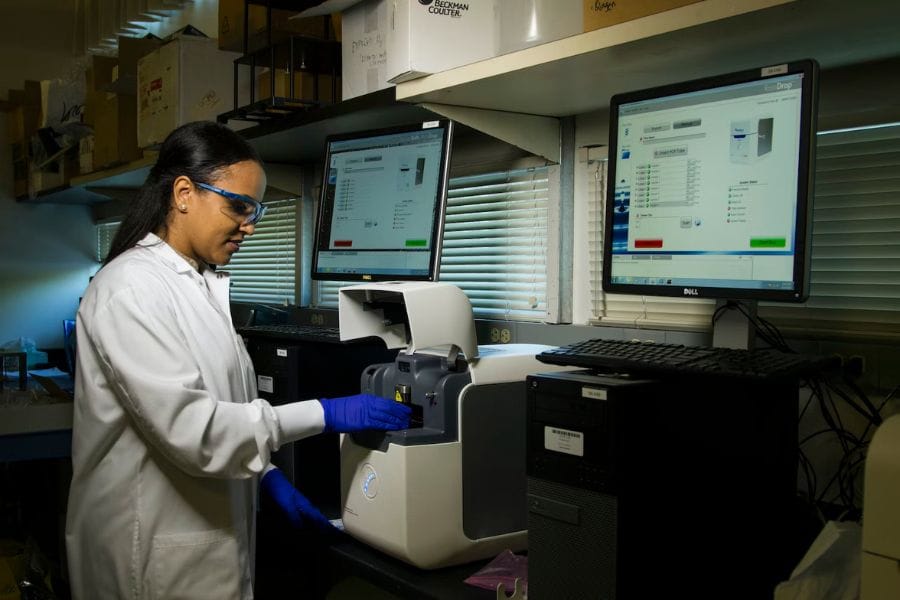The Next Frontier in Fertility Preservation: Advancements in Embryo Cryopreservation
Introduction

Embryo cryopreservation is a cutting-edge medical technique that involves freezing and preserving embryos at sub-zero temperatures for future use in assisted reproductive technologies. Its significance lies in revolutionizing fertility preservation, offering hope to individuals and couples facing challenges in conceiving or planning for parenthood. This method allows them to store embryos for extended periods, overcoming issues like age-related fertility decline, medical treatments affecting fertility, or genetic predispositions. With recent advancements in technology, including improved cryopreservation protocols and genetic screening, embryo cryopreservation has become a pivotal tool in family planning, offering greater control and flexibility in the pursuit of parenthood.
Advancements in embryo cryopreservation are ushering in a transformative era in fertility preservation. This groundbreaking technology offers newfound hope to individuals and couples facing fertility challenges or those seeking to delay parenthood for various reasons. Traditionally, fertility preservation has relied on methods such as egg freezing, which, while effective, has limitations. Embryo cryopreservation, however, is rapidly changing the game. This technique involves freezing fertilized embryos rather than unfertilized eggs, and recent breakthroughs have significantly improved its success rates.
The key advancements lie in the vitrification process, a flash-freezing technique that minimizes ice crystal formation and damage to embryos. Additionally, innovative cryoprotectant solutions have been developed to enhance embryo survival during freezing and thawing. These improvements translate into higher chances of successful pregnancies when embryos are later thawed and transferred, whether it’s for medical reasons like cancer treatment or for personal family planning. Moreover, the integration of artificial intelligence and machine learning is optimizing cryopreservation protocols, further enhancing outcomes.
As we delve deeper into the ethical, legal, and social aspects of this technology, it becomes evident that embryo cryopreservation’s impact on fertility preservation is not only substantial but also poised to reshape the possibilities of family planning in the modern world.
Importance of embryo cryopreservation in today’s society

Embryo cryopreservation, the process of freezing and storing embryos for future use, has emerged as a vital and increasingly crucial aspect of contemporary society. Its significance lies in its ability to address a range of pressing societal and individual concerns. First and foremost, embryo cryopreservation offers a lifeline to individuals and couples facing medical treatments that could compromise their fertility, such as chemotherapy or radiation therapy. By preserving embryos before undergoing these treatments, individuals can retain the hope of having biological children even after recovery.
Furthermore, it provides a solution for delayed family planning. In an era where many are prioritizing education and career pursuits, people often choose to start families later in life. Embryo cryopreservation enables individuals to freeze their healthy embryos during their reproductive prime, reducing the potential risks associated with advanced maternal or paternal age.
Lastly, embryo cryopreservation plays a pivotal role in supporting reproductive choices and family-building options for LGBTQ+ couples and single individuals. It allows same-sex couples to use both partners’ genetic material to conceive, while single parents can preserve their fertility until they are ready to start a family.
In essence, embryo cryopreservation aligns with the evolving dynamics of modern life, offering a means to safeguard fertility, expand family planning choices, and empower individuals to pursue their life goals without compromising their dream of parenthood. Its relevance in today’s society cannot be overstated, as it provides hope, flexibility, and control over one’s reproductive future.
Advancements in Embryo Cryopreservation

Fertility preservation has undergone remarkable transformations in recent years, with embryo cryopreservation emerging as a groundbreaking technique at the forefront of these advancements. This method, which involves freezing embryos for future use, offers new hope to individuals and couples struggling with infertility or those seeking to delay parenthood. In this article, we delve into the exciting world of embryo cryopreservation and explore the latest breakthroughs that are reshaping the landscape of reproductive medicine.
Vitrification: A Game Changer
One of the most notable breakthroughs in embryo cryopreservation is the widespread adoption of vitrification. Unlike traditional slow-freezing methods, vitrification involves ultra-rapid cooling, turning the embryo into a glass-like state. This technique significantly reduces the formation of ice crystals within the embryo, minimizing cellular damage during freezing and thawing. As a result, vitrification has substantially improved the survival rates and viability of thawed embryos, increasing the chances of successful pregnancies.
Cryoprotectants and Improved Solutions
Another critical development is the refinement of cryoprotectant solutions used during the freezing process. These solutions are carefully designed to protect embryos from damage caused by freezing and thawing. Advances in cryoprotectant formulations have led to reduced toxicity and improved embryo survival rates. Researchers have also fine-tuned the timing and concentration of these solutions to enhance the overall success of embryo cryopreservation.
Enhanced Success Rates

These advancements have translated into higher success rates for individuals and couples using embryo cryopreservation as part of their fertility preservation journey. The ability to freeze embryos effectively and safely means that more individuals can pursue IVF treatment without the time constraints or uncertainties often associated with fresh cycles. For women facing medical treatments that may compromise their fertility or those who wish to postpone pregnancy, this is a significant stride forward.
Artificial Intelligence and Machine Learning
In addition to improvements in techniques and solutions, artificial intelligence (AI) and machine learning (ML) have found their way into the world of embryo cryopreservation. These technologies are being employed to optimize the freezing and thawing processes. By analyzing vast datasets and real-time variables, AI and ML algorithms can suggest the most suitable protocols for individual patients, further enhancing the chances of success.
Ethical and Legal Considerations
While these advancements offer immense promise, they also raise ethical and legal questions. Embryo storage durations, for instance, can be a source of moral dilemma. Additionally, the ability to screen and select embryos based on genetic characteristics poses ethical challenges related to designer babies and the potential for discrimination. To address these concerns, strict regulations and guidelines are in place to ensure responsible and ethical use of embryo cryopreservation technology.
The Future of Fertility Preservation

Embryo cryopreservation’s rapid evolution is undoubtedly changing the landscape of fertility preservation. It provides renewed hope and flexibility to individuals and couples on their journey to parenthood. As technology continues to advance and research progresses, we can expect even more exciting developments in the field, potentially expanding the possibilities and accessibility of fertility preservation.
In conclusion, advancements in embryo cryopreservation represent a significant leap forward in reproductive medicine. Vitrification, improved cryoprotectant solutions, and the integration of AI and ML have collectively elevated the success rates of embryo cryopreservation. However, as we venture further into this exciting territory, it’s essential to maintain a balance between technological progress and ethical considerations, ensuring that this transformative technology is used responsibly and ethically to empower individuals and couples in their pursuit of parenthood.

1. Enhanced Success Rates
One of the most significant benefits of advancements in embryo cryopreservation is the substantial improvement in success rates. Traditionally, freezing embryos was associated with a degree of uncertainty, as ice crystal formation could damage the delicate structures of the embryo. However, recent breakthroughs in vitrification techniques have virtually eliminated this risk. Vitrification involves ultra-rapid freezing, turning the embryo into a glass-like state without ice formation. As a result, the survival rate of thawed embryos has increased dramatically, translating to higher chances of a successful pregnancy.
2. Extended Storage Durations
Embryo storage limitations have been a concern for individuals and couples seeking fertility preservation. Traditional techniques offered limited storage durations, often leading to the disposal of unused embryos. With advancements in embryo cryopreservation, these limitations are being stretched. Embryos can now be stored for more extended periods without compromising their viability. This is particularly beneficial for those who may need to delay family planning due to medical treatments or personal reasons, offering them greater flexibility and peace of mind.
3. Genetic Screening and Selection

Another remarkable advancement in embryo cryopreservation is the ability to perform genetic screening and selection. Preimplantation genetic testing (PGT) allows for the assessment of genetic abnormalities and chromosomal disorders in embryos before they are transferred. This technology not only increases the chances of a healthy pregnancy but also reduces the emotional and financial burden of repeated unsuccessful attempts. Couples with a history of genetic diseases can now significantly reduce the risk of passing them on to their children through the selection of healthy embryos.
4. Improved Cryoprotectant Solutions
The cryoprotectant solutions used in embryo cryopreservation have also seen significant improvements. These solutions are vital in safeguarding the embryos during the freezing and thawing process. Modern cryoprotectants are more efficient and less toxic to embryos, minimizing the potential damage caused during the preservation process. This not only enhances the survival rate but also preserves the quality of embryos, ensuring better prospects for a successful pregnancy.
5. Reducing Emotional Stress
Advancements in embryo cryopreservation are not just about improving physical success rates; they also alleviate the emotional stress associated with fertility preservation. Knowing that embryos are safely stored and that there are advanced techniques available can offer individuals and couples a sense of control and hope during challenging times. This emotional support is invaluable as it can positively impact mental well-being and overall quality of life.
Wrapping It Up

Advancements in embryo cryopreservation represent the next frontier in fertility preservation. This technology has the potential to redefine family planning, offering new possibilities and hope for individuals and couples worldwide. However, as we embark on this exciting journey, we must remain mindful of the ethical and legal challenges that arise and work collectively to ensure that these advancements are used responsibly and equitably. The future of fertility preservation is bright, and embryo cryopreservation is at its forefront, empowering individuals to take control of their reproductive futures.
Womb IVF and Fertility Center is dedicated to providing personalized solutions and guiding you on your journey to parenthood. Schedule an appointment or visit us today to explore the exciting possibilities of fertility preservation.
Image Reference: freepik.com, unsplash.com & pexels.com